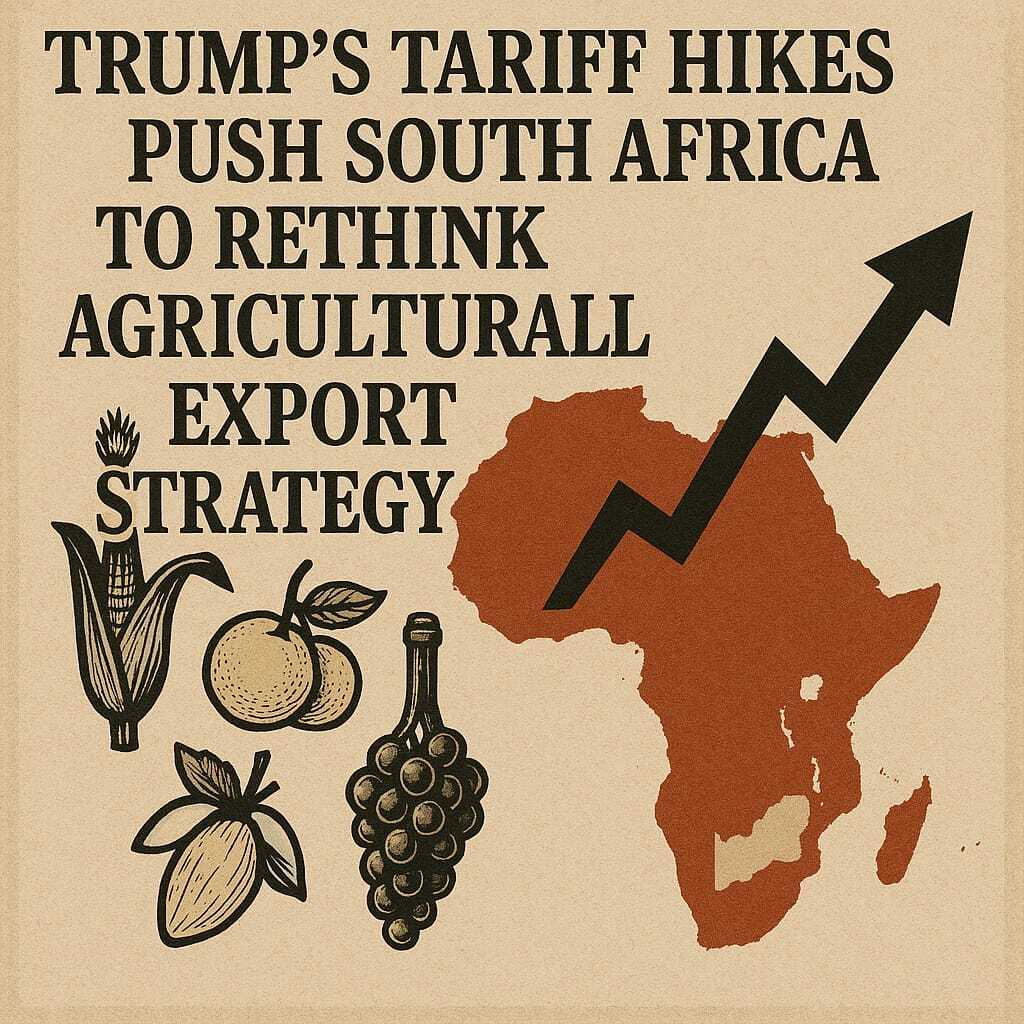The South African government is urgently reassessing its agricultural export strategy after the United States imposed new tariffs ranging from 10% to 31% on South African products. Previously duty-free exports like citrus, wine, grapes, and nuts are now directly affected, shaking a sector that exported a record $13.7 billion in 2024, according to Trade Map.
While the U.S. market accounted for only 4% of South Africa's agricultural exports last year, the sudden tariff hike threatens key industries and jobs. In response, South African ministers of International Relations and Trade announced intensified efforts to diversify export markets, targeting Africa, Asia, Europe, the Middle East, and the Americas.
“Efforts will intensify to diversify export destinations,” the ministers said. “Bilateral agreements will be explored where appropriate to secure our national interest.”
However, experts caution that opening new markets is a slow process. Trade agreements often take five or more years, and some, like the re-opening of Thailand for apple exports, took over a decade. In the short term, South Africa is seeking “additional exemptions and favourable quota agreements” with Washington to cushion the impact.
The Long-Term Strategy: Building Blocks for New Markets According to agricultural economists, three key areas should guide South Africa's long-term agricultural trade strategy:
- Target High-Growth Markets: Gulf nations such as Saudi Arabia, the UAE, and Qatar, and Asian giants like China, India, and Vietnam, represent untapped potential for South Africa’s high-value crops.
- Public-Private Collaboration: Stronger coordination between government and agri-businesses is essential for identifying aligned goals and leveraging diplomatic engagements effectively.
- Strengthening Domestic Readiness: Promoting exports like meat and dairy requires robust disease control systems and phytosanitary compliance to meet global standards.
Opportunities Ahead
Africa remains South Africa’s largest agricultural export destination at 38%, with the EU at 19%, and Asia and the Middle East at 25%. Within BRICS, countries like China and India offer the greatest promise. China, the world’s second-largest economy, has an agricultural trade deficit of over $117 billion, making it a prime target. South Africa's high-quality horticultural products and wine could fill some of this demand. Likewise, opportunities exist in Vietnam and India, where South African market presence remains small.
Short-Term Engagement & Trade-Offs
Domestically, industry bodies and commodity associations are encouraged to assess the impact of U.S. tariffs on specific sectors — citrus, wine, grapes, and nuts — and the corresponding job implications. There may also be room for reciprocal trade diplomacy, such as easing poultry import quotas from the U.S., where underutilized volumes could be restructured to improve bilateral goodwill.
Next Steps: Trade-Offs and Prioritization
Trade negotiations are fundamentally about choosing sectors to back for long-term growth. South Africa must make strategic trade-offs, prioritizing sectors with competitive advantages and export potential. The country has already concluded several successful trade agreements, including:
- The Southern African Development Community (SADC)
- The EU-SADC Economic Partnership Agreement
- The African Continental Free Trade Area (AfCFTA)
Expanding this portfolio is vital. But it must be accompanied by sectoral consultation to decide which products can be offered in trade deals and how to build global competitiveness. “Now is the time to back the right winners,” a trade analyst commented. “That means collaboration, clarity, and courage — from both government and the agricultural sector.”
Follow & Subscribe:
👉 Agri-Food Update on LinkedIn for the latest updates and insights.
🌐 Visit us at www.agri-food-update.com for more information!



